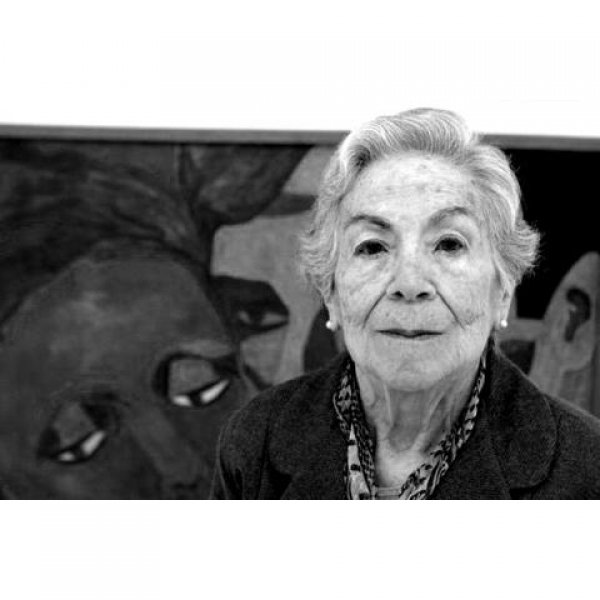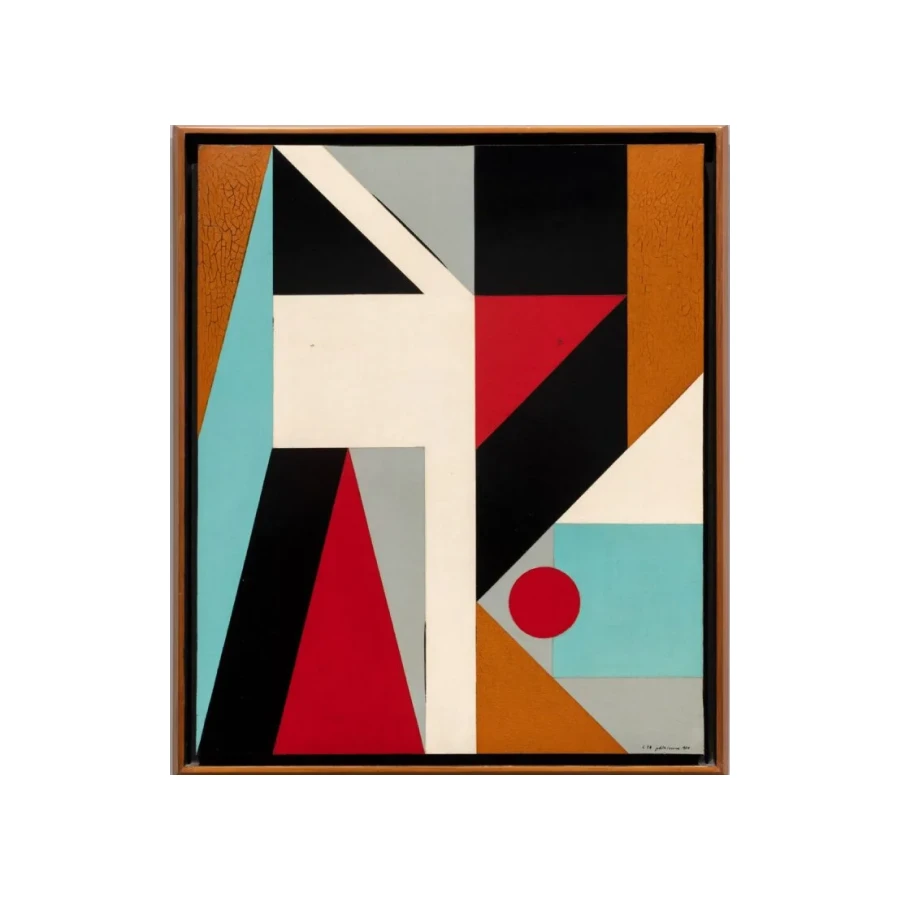Judith Lauand graduated from the Araraquara School of Fine Arts in 1950. Upon her move to São Paulo, she initially delved into figurative-expressionist painting. However, by 1953, she transitioned towards abstraction, while maintaining connections with expressionism. From 1954 to 1958, she wholeheartedly embraced the constructivist language, aligning herself with Concretism’s principles. Her works during this period exemplify a precise mathematical rigor. The artist explored unconventional materials, rarely employed in the realm of visual arts, including pins, tacks, and hinges. When applied to a two-dimensional surface, these materials produced controlled rhythms and optical illusions.
The artist held several solo exhibitions, with her first taking place in 1954 at Galeria Ambiente in São Paulo. She also participated in concrete art group exhibitions in São Paulo (1956), Rio de Janeiro (1957), and Zurich, Switzerland (1960). Her name was prominently featured in the São Paulo International Biennial on multiple occasions. Judith Lauand contributed to important exhibitions such as the Salão Nacional de Arte Moderna in Rio de Janeiro and the Salão Paulista de Arte Moderna, earning awards in 1954, 1955, 1959, and 1964.
Her works were also showcased in exhibitions such as the “Bienal Brasil Século XX,” and in 1996, she participated in “Tendências Construtivas no Acervo do MAC – USP.” According to Mario Schneberg, “…Judith Lauand was a leading figure in the founding of the São Paulo concrete art movement, collaborating with Waldemar Cordeiro, the group’s creator. This interaction with Cordeiro established strong links in terms of thought and artistic creation, which can be seen in the works of both. … Judith Lauand remains faithful to her concretist stance and trajectory. Her recent work reveals the density of composition, the refinement of chromaticism, the balance of graphics, achieved through constant research. Judith now embarks on new paths, creating works that can be called asymmetrical, where the geometry of chromatic decomposition destroys the ‘equilateral partition’ present throughout her oeuvre, creating a new symmetry.” Mario Schenberg.
Public Collections
Museu de Arte Moderna – São Paulo, , Pinacoteca do Estado de São Paulo and Museum of Fine Arts – Huston.


